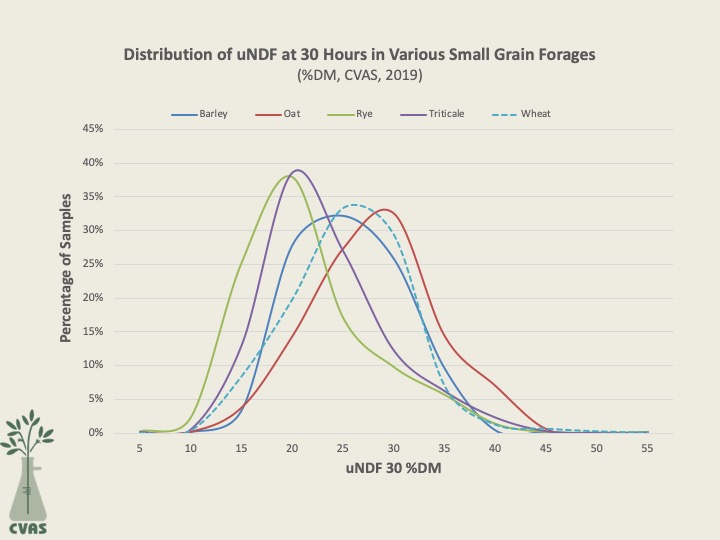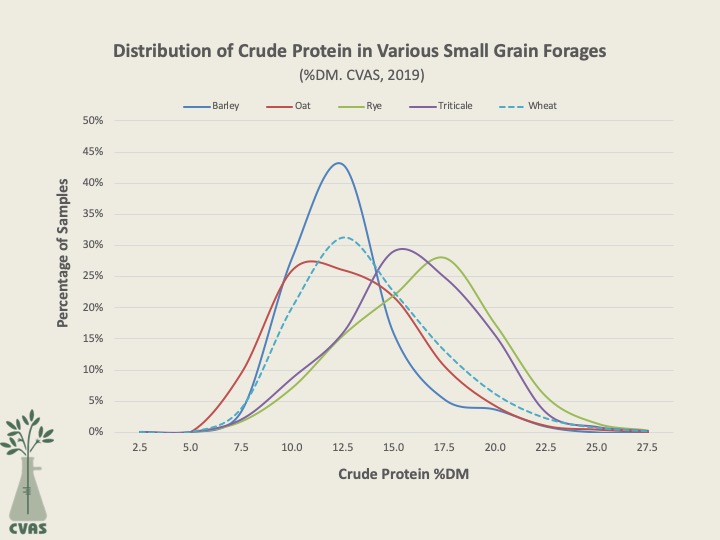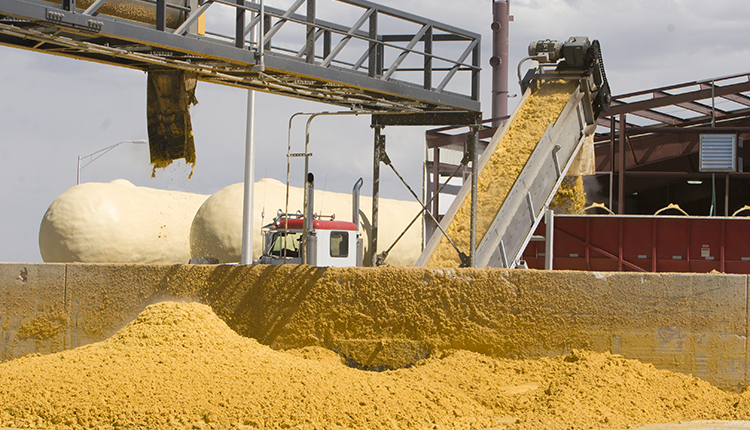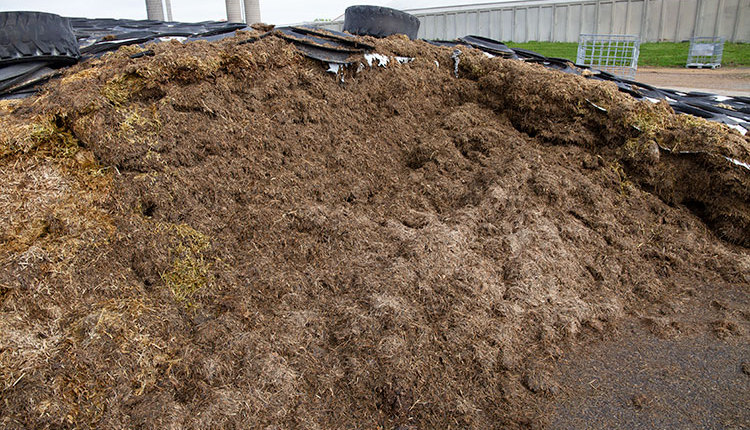
In many parts of the U.S., small grain forages will soon be harvested or may already be fermenting in storage structures for feeding. When harvested at the correct stage of maturity and put up at proper moisture levels, small grain forages can make excellent feed for milking rations or other animal groups. These feed materials provide early access to forage material when carryover from the previous year is limited. They can also supplement traditional hay crop forage and corn silage in production systems and hedge against the risk of limited summer forage production due to problem growing conditions.
Typical small grain forages include rye, barley, triticale, oat, and wheat materials. The use of one species over another may be based on a number of factors. These include stage of maturity in the available harvest window, yield, and nutritional quality, among others. Quality forage can be made from any of these species, if put up at the correct moisture and at the right stage of maturity.
Know what you need
There are two different approaches to defining the proper time to harvest for silage. For higher quality forage, harvest should occur at the flag leaf to late boot stage where the concentration of protein and energy is maximized and undigestible fiber (uNDF) is minimized, supporting high dry matter intake. As these forage materials mature to boot and then soft dough stages, tonnage increases dramatically, but fiber levels and uNDF also rise significantly. Target levels of nutrients are impacted by the tonnage and feeding objectives a dairyman may have for a small grain forage crop.
Consider the distribution graph below that shows the distribution of uNDF (in vitro, 30 hours) in various small grain forages tested at Cumberland Valley Analytical Services during the spring and summer of 2019. Notice the very wide range of uNDF for each species, which are primarily dependent on the time of harvest. Triticale can have a uNDF value ranging from 15% to 30% of dry matter. Rye forage typically provides the lowest uNDF of the small grain species and will often have a uNDF value even lower than a good corn silage. Rye, however, can be difficult to harvest at the right stage and moisture level given weather conditions in early spring.

Maturity impacts protein
Evaluating the distribution of protein in small grain forage species, we see the impact of maturity as it is observed in NDF and uNDF. As the forage matures, uNDF quickly rises while protein in the crop drops. The distribution graph below shows the range in crude protein at harvest by small grain species. Rye typically provides more protein than other species. Levels of protein in barley may be lower as this crop is more often harvested at the soft dough stage where protein is diluted out by the starch content of the plant.

Small grain forages can progress from vegetative to boot and soft dough stages in a very short period of time, depending on moisture, sunlight, and heat units. It is critical to watch growth closely and be prepared to match field maturity with a weather window allowing for harvest. This challenge can make small grain forage harvest risky.
Nonetheless, small grain forage can be an advantageous crop in the dairy production system. It can provide high-quality feed with low uNDF levels that support high dry matter intake. Nutrient content can vary considerably with unique nutrient characteristics, which makes forage testing a necessity for proper characterization of the harvested crop. Despite some of the challenges associated with small grain forages, it can bring significant value to the dairy feeding system.









